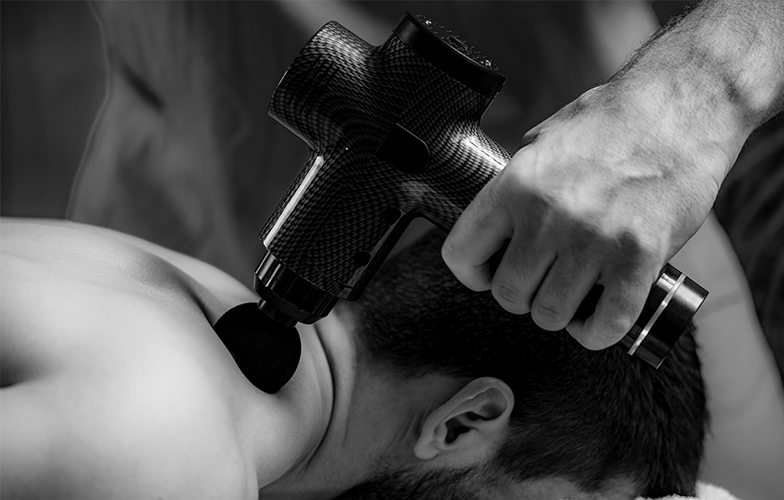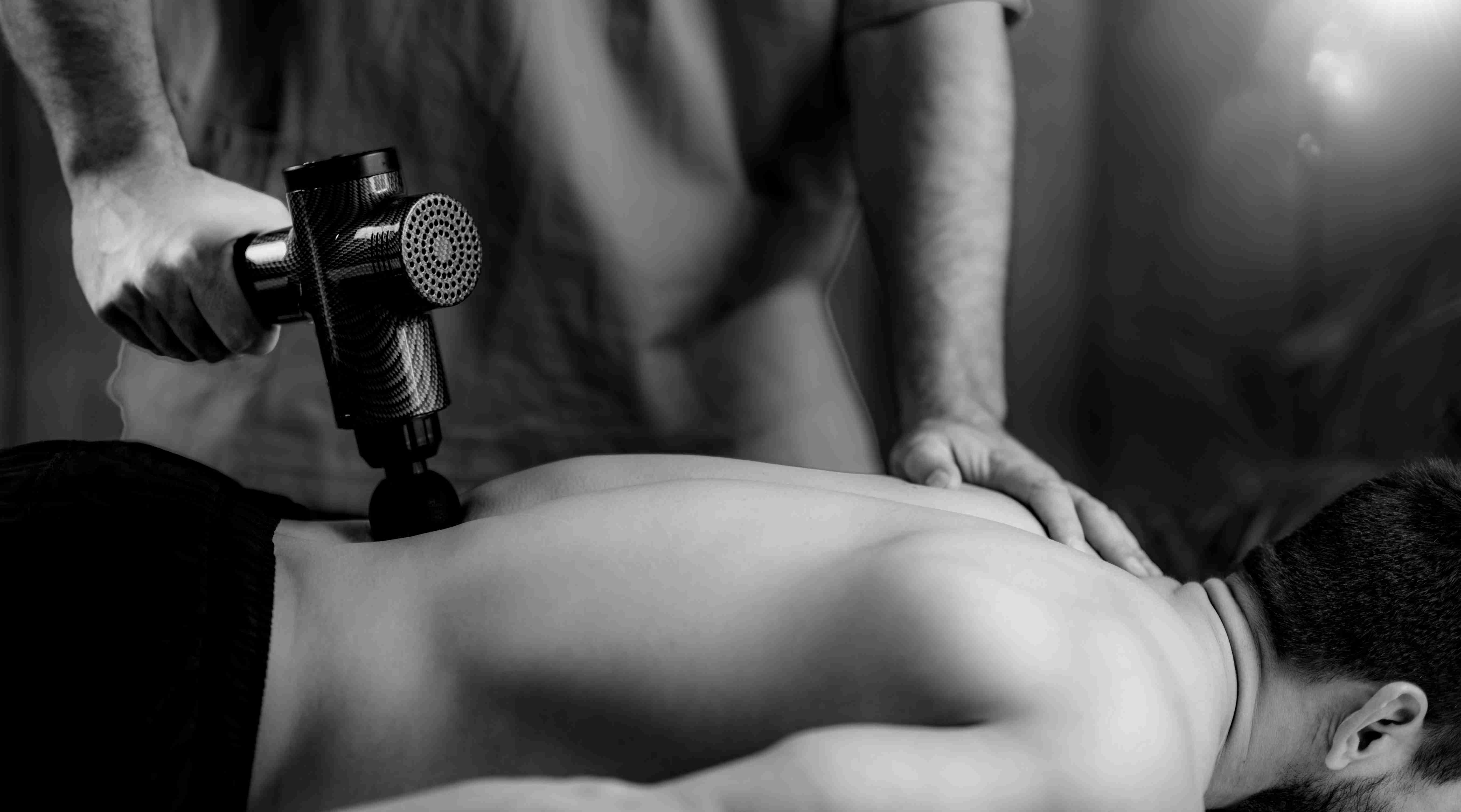Percussion Therapy
Percussive (also called percussion) massage uses rapid and repetitive pressure combined with vibration therapy. The massage head moves quickly and forcefully, applying pressure directly to your soft tissue, while the vibrations engage the outer layer of skin. The primary tool used to deliver this treatment is the massage gun, which helps to release tight knots—the primary culprits for back and shoulder pain.
Let Elite Athletics help you get those hard-to-reach places so you can relax, and recover, faster and more efficiently.
When the massage gun is applied, the massage head pounds away rhythmically at the targeted muscle. While this might sound uncomfortable on paper, the effect is actually the opposite. What’s more, it reaches deeper than foam rollers or human hands can, which is great for those who have tight tense knots deep within the layers of muscles and fascia.
Percussive therapy is for anyone who has an active lifestyle—professional athletes, CrossFitters, gym buffs, and people who want to push themselves beyond their limits by recovering fast.
The Benefits
Improved Mobility and Flexibility
Your stiff neck, sore back or aching muscles may be due to fascia, layers of tissue and fluid that surround and stabilize your bones, muscles, nerves and blood vessels. Certain factors, such as repetitive movement, trauma or limited physical activity (such as sleeping), can cause the fascia to thicken and tighten up around the muscles. When that happens, you’re left with pain and limited mobility.
Percussive massage helps distribute the thickened fascia fluid to relieve the pressure and tightness you feel. Repeated pressure at high speed thins the fluids, making the fascia more pliable so that your muscle can move more easily and efficiently.
Your flexibility will also improve your posture and balance. As published in a 2019 systematic review, combining vibration therapy with physical therapy can enhance your gait speed and walking performance, especially in people who have experienced a stroke and knee osteoarthritis


